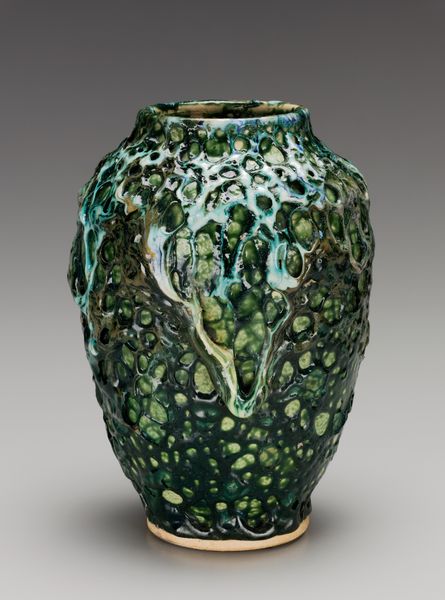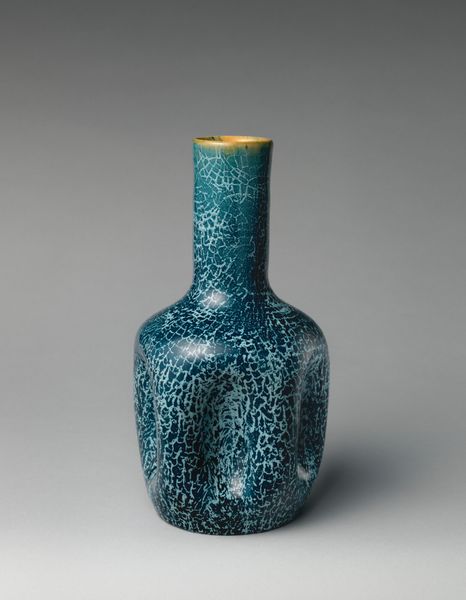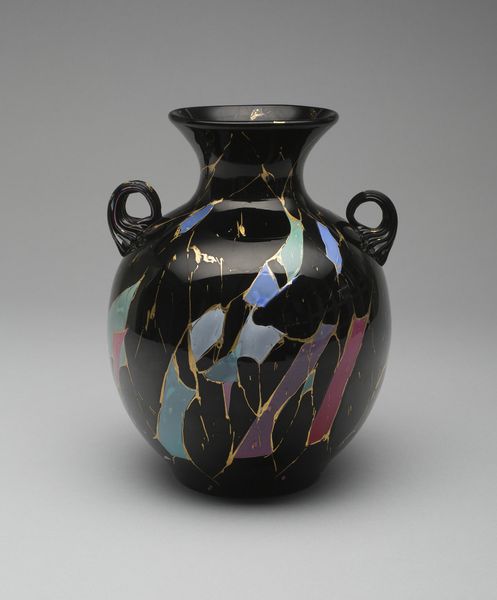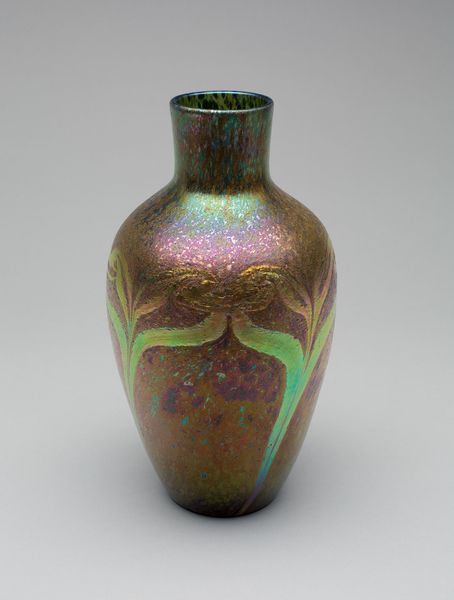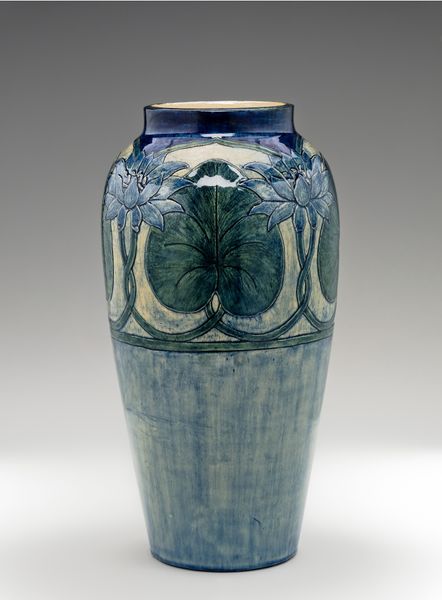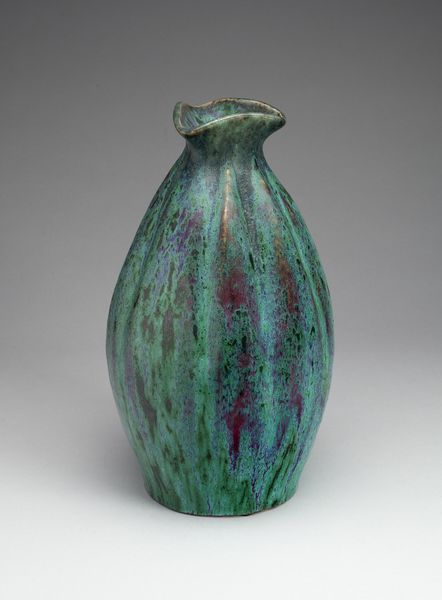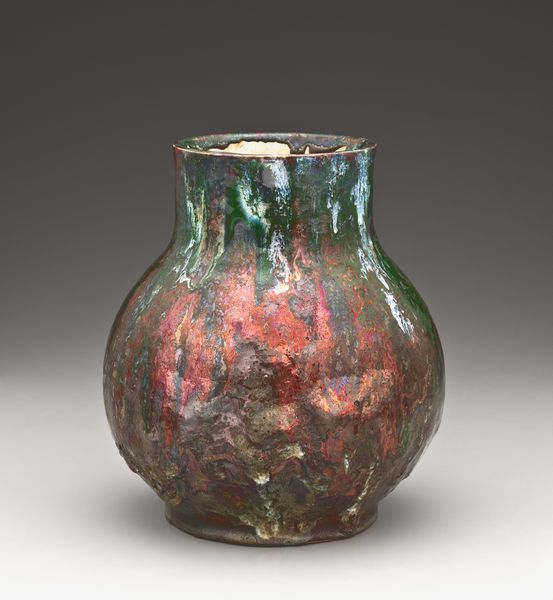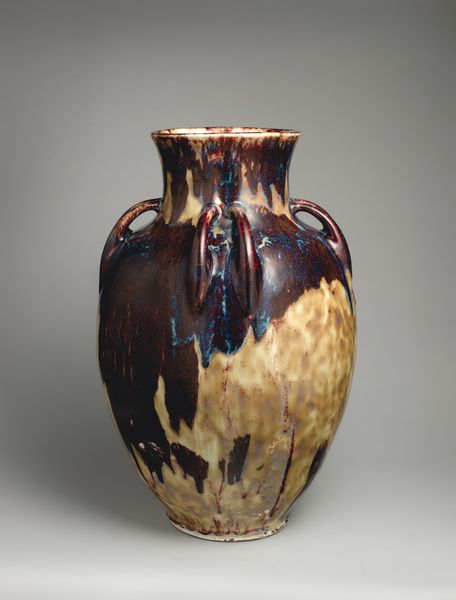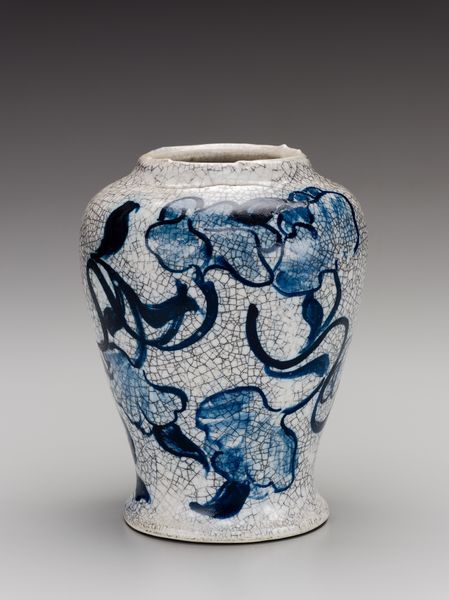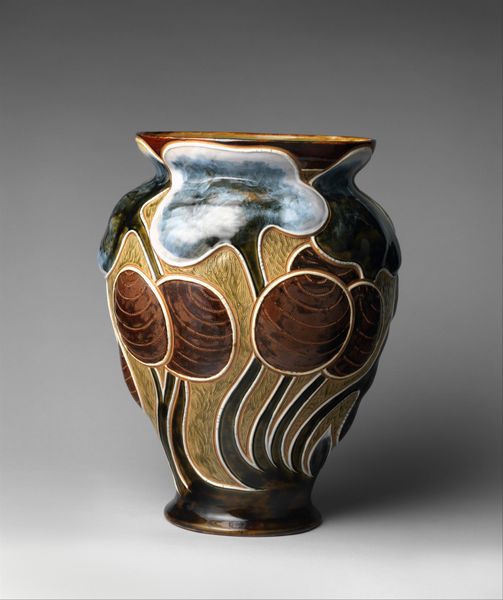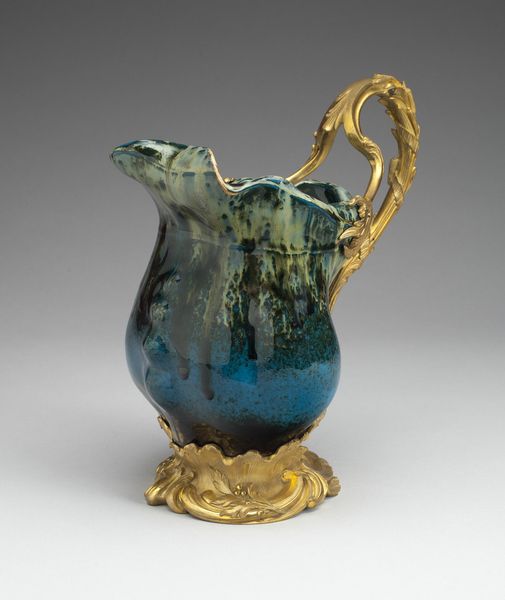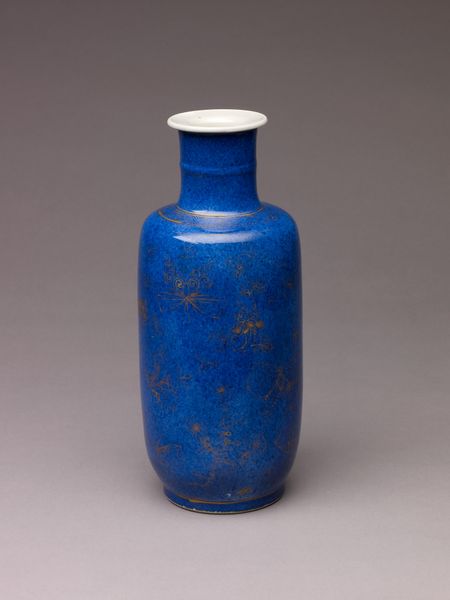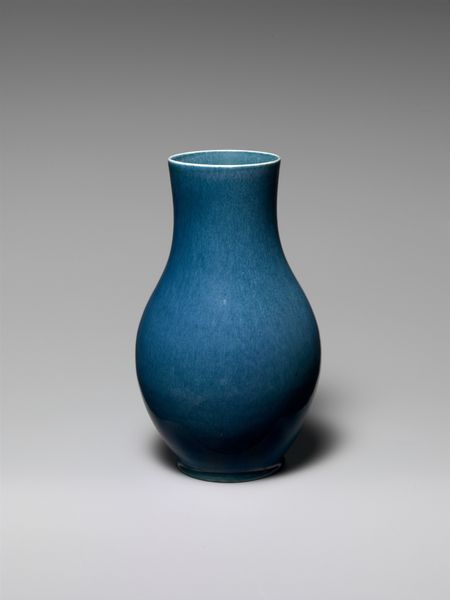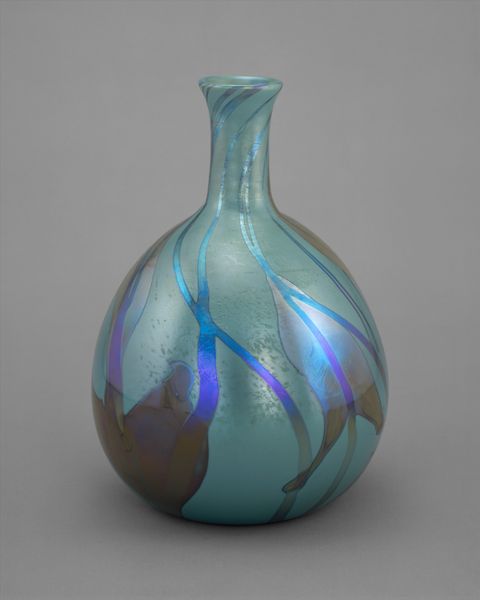
glass
#
art-nouveau
#
vase
#
glass
#
decorative-art
Dimensions: H.: 11.4 cm (4 1/2 in.)
Copyright: Public Domain
Curator: Here we have a glass vase by Loetz, dating from around 1900. It's currently held in the collection of the Art Institute of Chicago. Editor: My immediate thought is "iridescence." The way the light plays across that surface—it's captivating. It pulls me right in with that aquatic, almost otherworldly glow. Curator: That shimmer is certainly intentional. Loetz was a master of iridized glass. Notice how the applied metalwork depicting stylized plants seems almost suspended within that luminescent surface. Art Nouveau truly embraced the decorative potential of natural forms. These winding tendrils recall earlier traditions like Celtic interlace. Editor: Exactly. And that metallic overlay both obscures and enhances the form. There's a tension between surface decoration and the underlying vessel shape, almost a denial of its function. Do you feel it gestures more to fluidity or constraint? Curator: I lean toward constraint. The vase itself is quite traditional, yet the Art Nouveau styling evokes an aspirational upward thrust; those flowing plant-like forms strain against its rather squat volume, hinting at nature untamed, idealized. These artists lived on the cusp of major industrial developments, mass media, psychology and they yearned for this feeling of a lost Eden. Editor: A lost Eden trapped in glass... The subtle gradations in the glasswork—shifting blues, greens, and purples—hint at constant change. Do you find it visually disorienting as well as attractive? Curator: Perhaps in the same way as looking too long into a deep well or too intently into ourselves; both act as alluring portals and unsettling depths. Glass-making around the turn of the century witnessed many radical experiments with coloration and texture, so this surface is far from ordinary! Its visual effect goes well beyond a mere accessory. Editor: Very true. Now, thinking about Loetz, this piece highlights the ambition and artistry bubbling around turn-of-the-century Vienna. A time when functional objects reached for a level of spiritual significance through their aesthetic appeal. Curator: Yes, they wanted to make everyday objects special and meaningful. Reflecting upon this artwork reveals not only the decorative aspects of Art Nouveau but a culture eager to embrace new ways of expressing its spiritual and cultural beliefs. Editor: It really allows us to reconsider decorative art as having real substance and a valuable perspective of its own era.
Comments
No comments
Be the first to comment and join the conversation on the ultimate creative platform.
